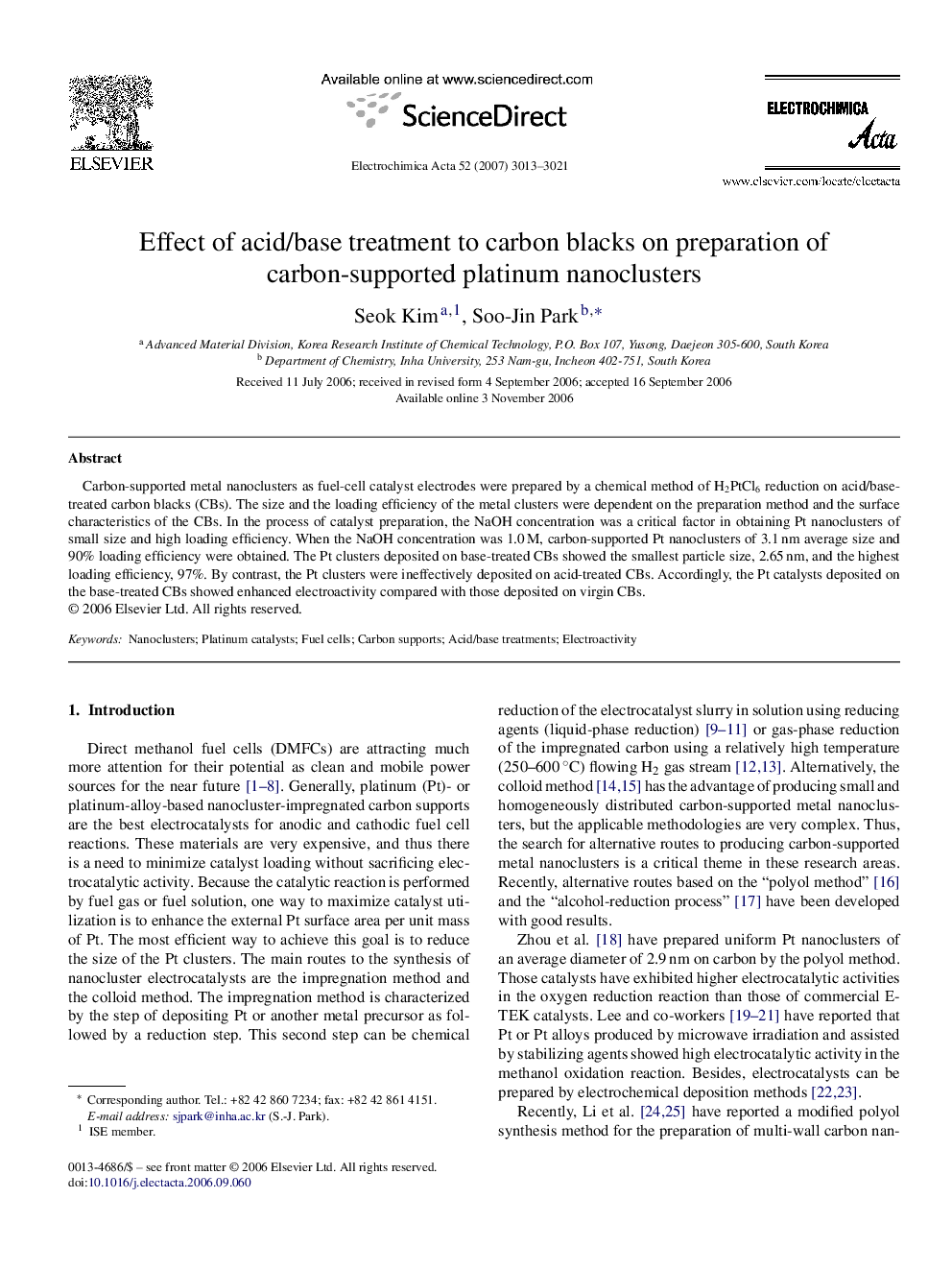| Article ID | Journal | Published Year | Pages | File Type |
|---|---|---|---|---|
| 194070 | Electrochimica Acta | 2007 | 9 Pages |
Carbon-supported metal nanoclusters as fuel-cell catalyst electrodes were prepared by a chemical method of H2PtCl6 reduction on acid/base-treated carbon blacks (CBs). The size and the loading efficiency of the metal clusters were dependent on the preparation method and the surface characteristics of the CBs. In the process of catalyst preparation, the NaOH concentration was a critical factor in obtaining Pt nanoclusters of small size and high loading efficiency. When the NaOH concentration was 1.0 M, carbon-supported Pt nanoclusters of 3.1 nm average size and 90% loading efficiency were obtained. The Pt clusters deposited on base-treated CBs showed the smallest particle size, 2.65 nm, and the highest loading efficiency, 97%. By contrast, the Pt clusters were ineffectively deposited on acid-treated CBs. Accordingly, the Pt catalysts deposited on the base-treated CBs showed enhanced electroactivity compared with those deposited on virgin CBs.
